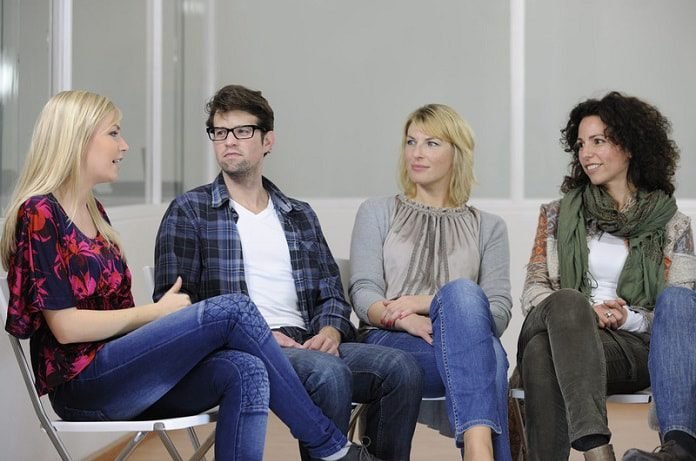A Swedish study used a randomized controlled trial to evaluate the use of mindfulness-based group therapy (MGT) as a treatment for psychiatric disorders. The results show no significant difference in outcomes between MGT and the standard cognitive behavioural therapy (CBT), suggesting that MGT can be an effective treatment that increases the scope and reduces the cost of intervention.
Psychotherapy interventions in primary healthcare are an important component of the treatment of patients diagnosed with psychiatric disorders, such as depressive, anxiety/stress and adjustment disorders. These afflictions can vary in severity and symptoms, but overall can be a major detriment to an individual’s mental health and to society as a whole. Often used in conjunction with antidepressant pharmacological agents, the most widely used evidence-based psychotherapy today is cognitive behavioural therapy (CBT), which focuses on problem-oriented and action-focused coping strategies for overcoming negative thoughts and attitudes. However, CBT is most often conducted on a one-to-one basis between patient and therapist, and as such remains either inaccessible or available only after a long wait time.
In recent years, a new form of psychotherapy called mindfulness-based group therapy (MGT) has been the focus of several studies. MGT differs from CBT in that it can be administered in group settings, and uses a meditative, decentered approach to dealing with emotions and thoughts. In addition, after a training period, patients can continue to practice the technique on their own at home. Because of this, it has the potential to significantly relieve a burden on a nation’s healthcare system and increase the chance of positive outcomes for many more people.
The present study published in European Psychiatry is one of the first randomized controlled trials to compare MGT to CBT in a primary care setting. A team of researchers in Sweden devised an 8-week study which took place in 2012 at 16 primary care centers. The demographics of the subjects varied, including a total of 215 men and women, ages 20-64 years, presenting a wide range of psychiatric symptoms, both recently diagnosed and historically documented. They divided the participants into two groups, one which received MBT (the experimental group) and one which received CBT (the control group). Some patients were also prescribed psychotropic drugs if deemed necessary, but the authors state that there was no significant difference in the use of pharmacological agents between the two groups. The main metric for outcome determination was the Symptom Distress Checklist (SCL-90), which the patients completed both before and after the study. This questionnaire measures symptom intensity on a number of subscales, such as “obsessive-compulsive,” “depression,” and “phobic anxiety” among others. They also used the Mindful Attention Awareness Scale (MAAS) to measure the patients’ awareness and understanding of what was taking place.
The authors compared the baseline SCL-90 to the one after intervention for both groups and calculated the changes in the values reported. They saw a reduction in clinically significant problems from both groups after treatment. Using a number of statistical methods, they determined that there was no significant difference in the changes observed between the two groups, suggesting that MBT as a treatment for psychiatric disorders is clinically relevant. The results of the MAAS showed that both groups demonstrated a heightened awareness of what was taking place.
A limitation cited by the authors was that the follow-up period after completion of treatment was not particularly long, and as such they were not able to confirm the continued improvement of symptoms over time. However, this was the first study of its kind to use an active control group (the CBT group), which provided a basis for comparison and made the results and interpretation more robust.
Brain imaging studies focused on types of MGT suggest that this type of training can actively modify brain patterns associated with depression and anxiety, generating structural and functional changes and improving emotional regulation. These neurophysiological results, coupled with the results of this randomized controlled trial, suggest that MGT can open up a world of positive outcomes to those most in need of psychiatric healing.
Written By: Adriano Vissa, PhD Candidate



